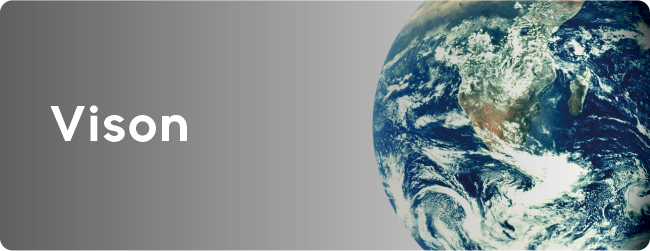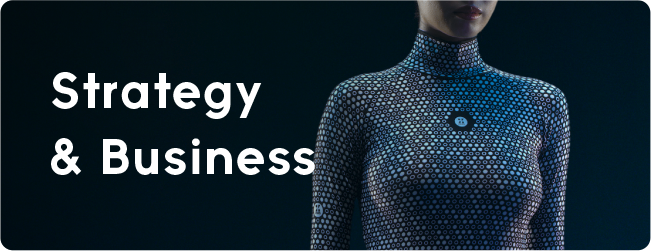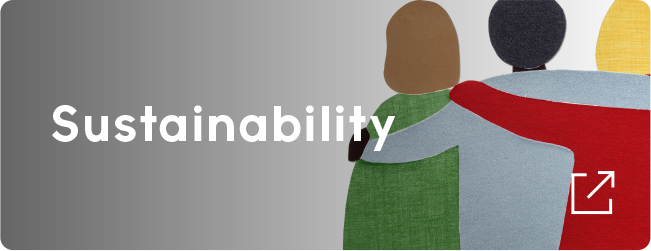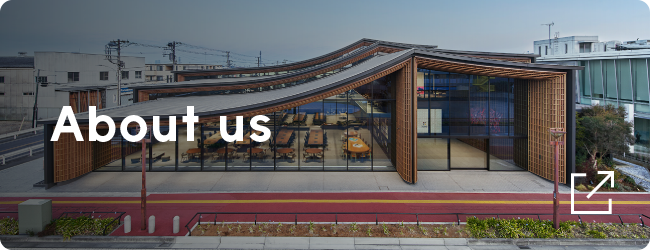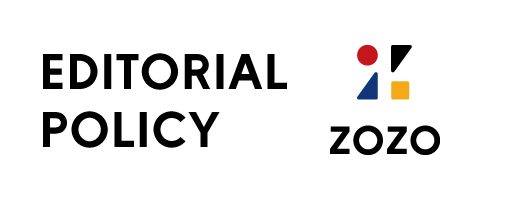- EN
- JP
Basic Policy
Social
Environment
© ZOZO, Inc. ALL RIGHTS RESERVED.
Empowering Brands with “Made by ZOZO”: Tackling Overproduction Challenges with a Made-to-Order Platform

General Manager
Production Platform Development Division
ZOZO
SUZUKI Daisuke

General Manager
Nano Universe Department
TSI Inc.
OTSUKA
Yuki
With “Fashion Connects and Leads us to a Sustainable Future.”as its sustainability statement, ZOZO aims to create a world where people can continue to enjoy fashion forever. One of our key actions is “Create a made-to-order platform for zero waste.”
The fashion industry faces numerous sustainability challenges, recognized as the “world's second-largest environmental polluting industry” by the United Nations Conference on Trade and Development. Excessive production and waste are particularly concerning, as achieving a sustainable society would be impossible without addressing these issues.
Against this backdrop, ZOZO launched the production support service “Made by ZOZO” in 2022, aiming for zero inventory risk for fashion brands. Through made-to-order production, we hope to reduce inventory risks and address environmental issues.
In the midst of the expansion of on-demand production methods, how much can it contribute to addressing the challenges faced by the fashion industry?
Through a discussion with SUZUKI Daisuke, General Manager of the Production Platform Development Division of ZOZO, and OTSUKA Yuki, General Manager, Nano Universe Department, at TSI Inc., we will delve into the challenges faced by the fashion industry and potential solutions.
The Fashion Industry: “World's second-largest environmental polluting industry”
— According to the United Nations Conference on Trade and Development, the fashion industry has been identified as the “world's second-largest environmental polluting industry.” What are the issues related to this situation?
Otsuka : I believe the root issue is the “overproduction” of clothing.
In Japan, about 3.7 billion pieces of clothing(*1)are supplied domestically every year. However, 1.1 billion pieces, equivalent to approximately 30%(*2), remain unsold. We are producing more clothes than necessary. The main reason for producing such vast quantities is the order quantity.
To offer products at prices attractive to customers, it's challenging to place orders in small lots from a cost perspective, necessitating ordering more than required.
That said, it's a brand's problem. As someone running a brand, it feels extremely distressing.

Suzuki : If we could only produce the necessary amount of clothing, the current environmental impact would not be so severe. However, optimizing inventory isn't something brands can achieve solely through their efforts. A significant reform is needed.
Otsuka : Until early this year, I had been away from the fashion industry for two years. Viewing the industry from the outside made me realize that the challenges are far more severe than most insiders believe.
Many people are aware of the overproduction issue, but not many truly understand its depth. I believe the first step to solving this is for everyone in the fashion industry to recognize just how serious it is.
(*1) “Overview of the Japanese Apparel Market and Imported Goods 2023” - Japan Textile Importers Association
(*2) Calculated from Reference 2: Fashion and Environment, Survey Report for Fiscal Year 2022, with a focus on Clothing Collection and Reuse (Ministry of the Environment), Page 4.
Addressing the Fashion Industry's Challenges with “Made by ZOZO”
— In September 2022, ZOZO launched the Production support service “Made by ZOZO,” aiming for zero inventory risk for fashion brands. Was one of the driving factors behind this initiative to curb overproduction?
Suzuki : The approach of producing one piece at a time after receiving an order was initially developed for running our private brand. While the private brand has since ended, we utilized the multi-size production expertise we had gained to support fashion brands in addressing industry challenges with “Made by ZOZO.”

Otsuka : When I first heard about “Made by ZOZO,” I was genuinely amazed. Typically, due to the need to hold inventory, there's a need to limit color and size options. However, with “Made by ZOZO,” since there's no need to keep stock, it's possible to offer a broad range of colors and sizes without any inventory risk.
Additionally, by using “Made by ZOZO,” brands can plan new products without worrying about inventory risk and discover customer needs they might not have been aware of before. This can lead to new sales opportunities, prevent lost sales due to stockouts, and address environmental issues simultaneously. I haven't seen such a groundbreaking service before.
Suzuki : Thank you very much. There are still many things we can do and want to do, so we look forward to further growing “Made by ZOZO” together with our partner brands.
Otsuka : I believe it's the brands' role to bring about breakthroughs. The issues of mass production and waste have been known for a long time to those working in the fashion industry. But due to the structure of the value chain and technological aspects, many turned a blind eye.
I was deeply inspired by what ZOZO is taking on as a platformer. In response, we brands must recognize the profound significance of producing products on-demand for the future of the industry. By voicing our desires and questions like “Can we do this?” and “We'd love to do that,” and building upon successful examples, we believe it's imperative to enhance and elevate the service.
Transitioning to an Era Defined by Purpose, Not Superficial Value
— In promoting the resolution of challenges in the fashion industry through “Made by ZOZO,” what do you believe is required?

Suzuki : I believe that if there are visible benefits and success stories from brands, many more brands would be inclined to participate. If there's talk like “There seem to be impressive results from made-to-order production,” more brands would likely show interest. This focus on made-to-order systems should certainly drive momentum in addressing the fashion industry's challenges.
Otsuka : The products released by “NANO universe” through “Made by ZOZO” have been selling well, and we feel very positive about it. Without the risk of inventory, the obstacles to taking on challenges are reduced. This not only enables us to create “unique products” that embody our brand's essence and not follow the trends.
Suzuki : Exactly. If brands can create products that truly represent their identity through “Made by ZOZO,” the number of brands engaging with us would naturally increase. This trend not only addresses the challenges in the fashion industry but also provides an opportunity to further elevate the industry.

Otsuka : Moving forward, I believe that the “purpose” of a brand will be increasingly important in defining its value in this new era.
Previously, a brand's world could be conveyed through its physical stores and staff. However, due to the impact of COVID-19, there's been a significant increase in online shopping, making it harder for brands to differentiate themselves from others.
In such a future, brands that cannot answer the question “Why does your brand exist?” or articulate their “purpose” —the very reason for their existence—will inevitably be phased out.
Considering this, “Made by ZOZO”, which reduces inventory risks and enables more nimble initiatives, isn't just about solving the fashion industry's challenges. It's also a service that helps brands express their unique worldview, ensuring they remain relevant and distinct.
Suzuki : “Made by ZOZO” aims to be a service creating clothes tailored for 100 million individual people, not just a mechanism producing 100 million pieces of clothing. Just like “NANO universe,” we're committed to collaborating with brands that embody a clear purpose, refining our services to consistently cater to our customers' needs.
Otsuka : For “NANO universe”, everyone at ZOZO, including Mr. Suzuki, are teammates. It's an industry filled with challenges, but the beauty of fashion is its power to bring joy to people. Let's continue to work together and redefine the standards.
